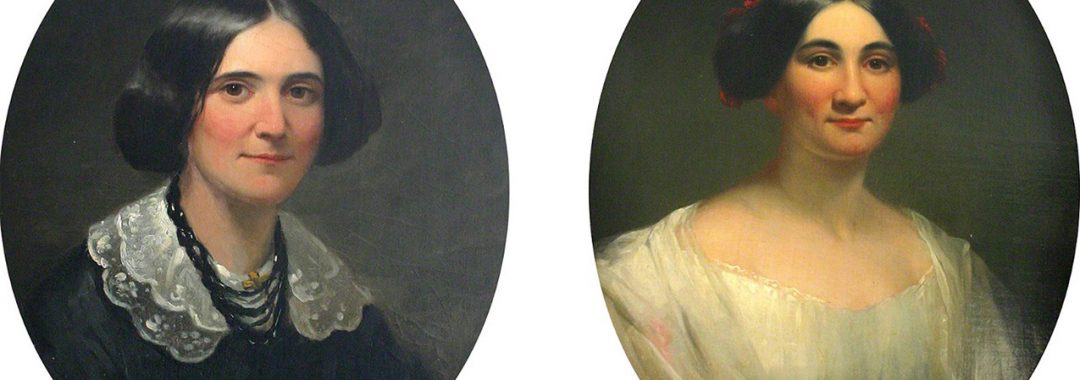
CMC Blog
Clovernook and the Trader Sisters
By: Sarah Staples, Helen Steiner Rice Archivist
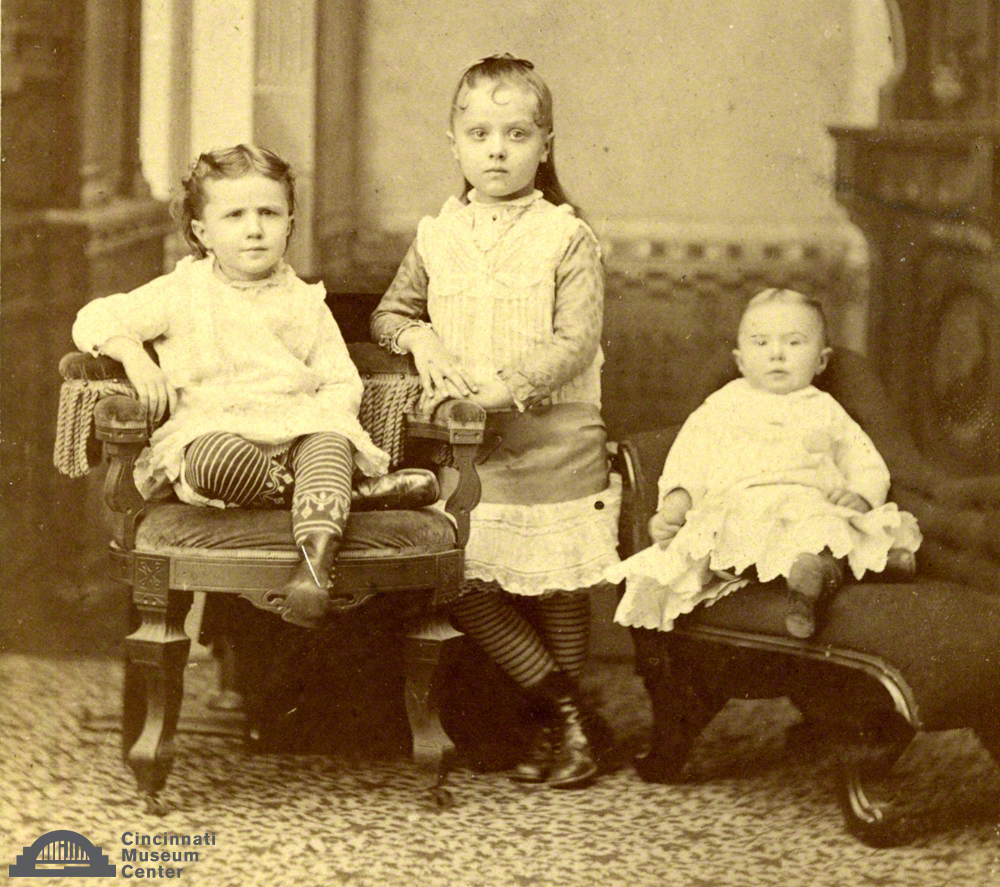
Georgia, Effie, and Florence Trader, [1880?]. Cincinnati Museum Center. Clovernook Photo Collection (Backlog).
Georgia Duckworth Trader was born with impaired vision on January 30, 1876. Her sister and lifetime companion, Florence, was born on August 19, 1878. There were two other Trader sisters; the oldest sister and well-known artist, Effie, and the youngest Trader sister, Louise. All of the sisters were born in Xenia, OH.
As a child, Georgia went to Cincinnati several times for eye treatments. In 1885, an operation caused an infection to develop which resulted in her becoming completely blind by the age of eleven. With no suitable education facilities in Cincinnati, Georgia's mother, Elizabeth, took her to the Ohio Institution for the Education of the Blind (later named the Ohio State School for the Blind) in Columbus. Unhappy with the conditions at the school Elizabeth chose to return to Cincinnati with Georgia. Elizabeth taught herself how to read and write in the New York Point System, which she then taught to Georgia. Georgia's family, especially her sister Florence, ensured that Georgia led a normal life. She learned how to roller skate, dance, sew, and play piano and cards. Georgia attended the school in Walnut Hills with Florence; she was the first blind child to attend public school. Florence and Georgia later graduated from Miss Armstrong's School in Cincinnati, Ohio.
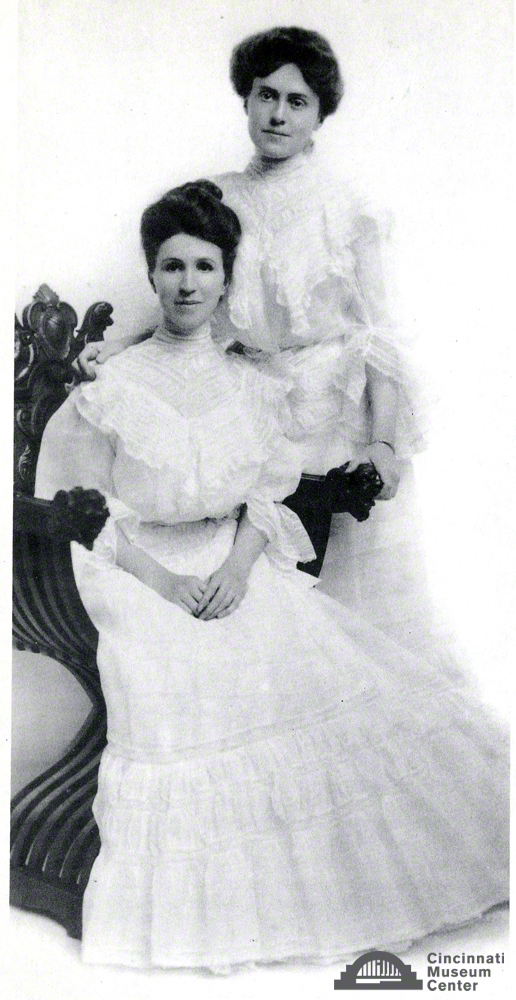
Photo of Georgia and Florence Trader, 1903. Cincinnati Museum Center. Mss 1109. Clovernook School for the Blind Records: box 13, folder 1, item 1.
Inspired by the fact that many blind people did not have access to embossed books, Georgia and Florence approached the Cincinnati Public Library about creating a library for the blind here in Cincinnati. After proving there was a need, by visiting the 400 blind people in Hamilton County and observing their condition, the Cincinnati Public Library decided to provide a room to house books for the blind, but they would not provide funds for acquiring books. The Trader sisters raised money, bought the first 100 books, and organized The Cincinnati Library Society for the Blind on March 19, 1901. In addition to providing books for the blind, Georgia and Florence taught blind people how to read raised type, knit, and sew at the library. The Trader sisters also worked with Cincinnati street car companies to provide free tickets to blind people and their guides which enabled them to reach the library.
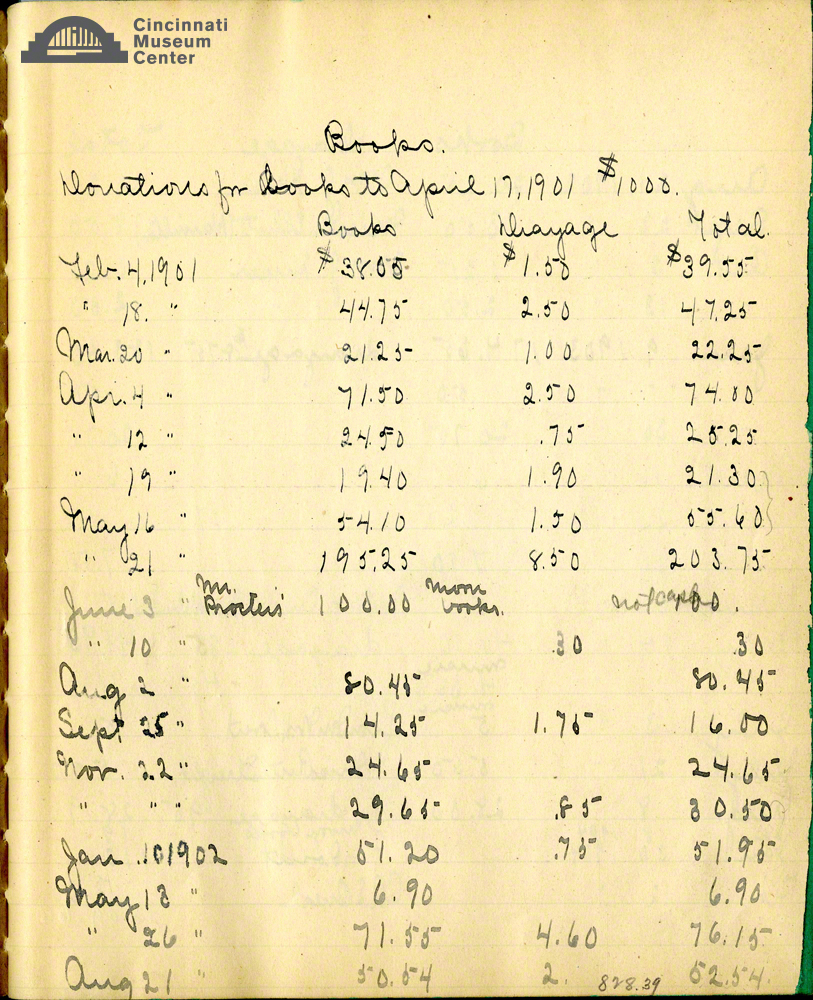
Donations for Books, 1901-1902. Cincinnati Museum Center. Mss 1109. Clovernook School for the Blind Records: box 6, folder 1.
In addition to their work with the Public Library, the Trader sisters worked diligently to help the children of Cincinnati. In 1904, they used their influence to arrange for Dr. Frank Phinney to complete eye examinations on public school children for free. They hoped to prevent blindness caused by treatable eye diseases. They also used their influence to enable blind children to attend public school. Originally taught in a segregated classroom by a Miss Gaddum, they were eventually integrated into the general school population. The Trader sisters also arranged for the transportation of blind children to public school.
After years of visiting blind people in their homes the Trader sisters realized that more needed to be done for blind people outside of education. Many blind people were left destitute or committed to infirmaries after leaving school, because they did not have an opportunity to earn a living. Hoping to bring some relief the Trader sisters opened Clovernook, an industrial home for the blind on May 8, 1903.
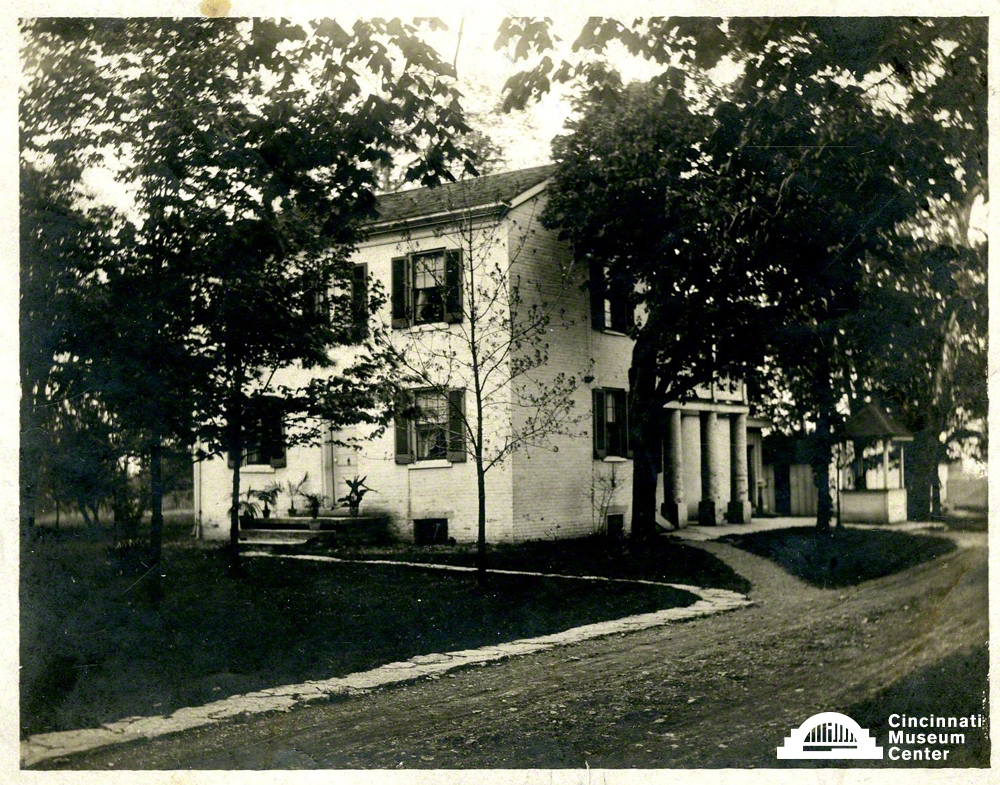
Photo of original Clovernook (later called Cary Cottage), n.d. Cincinnati Museum Center. Clovernook Photo Collection (Backlog).
The property was originally built in 1832 for Robert Cary and his 9 children, two of whom were the famous poets, Alice and Phoebe Cary. William A. Procter, a son of the Procter & Gamble co-founder, purchased the 26 acre Cary property, which included an eight room brick home, on March 11, 1903. Procter had helped the Trader sisters since their early work establishing the Cincinnati Library Society for the Blind.
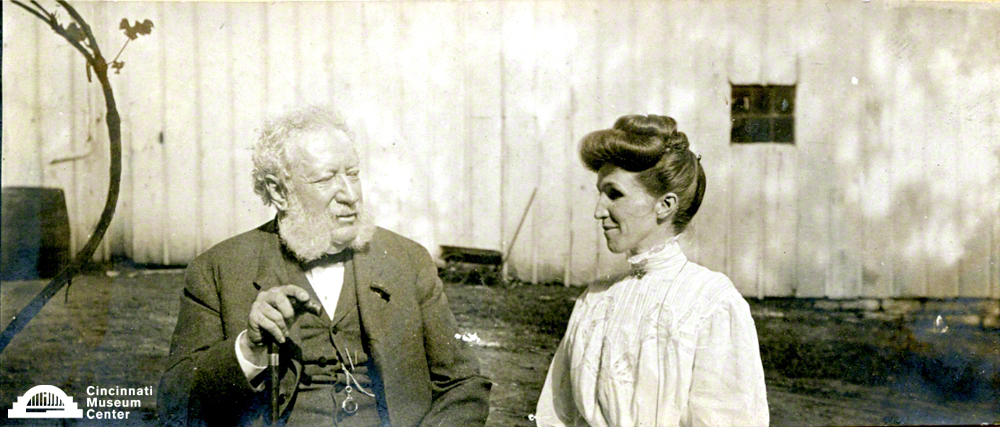
Photo of Georgia Trader and William A. Procter, [1903?]. Cincinnati Museum Center. Clovernook Photo Collection (Backlog).
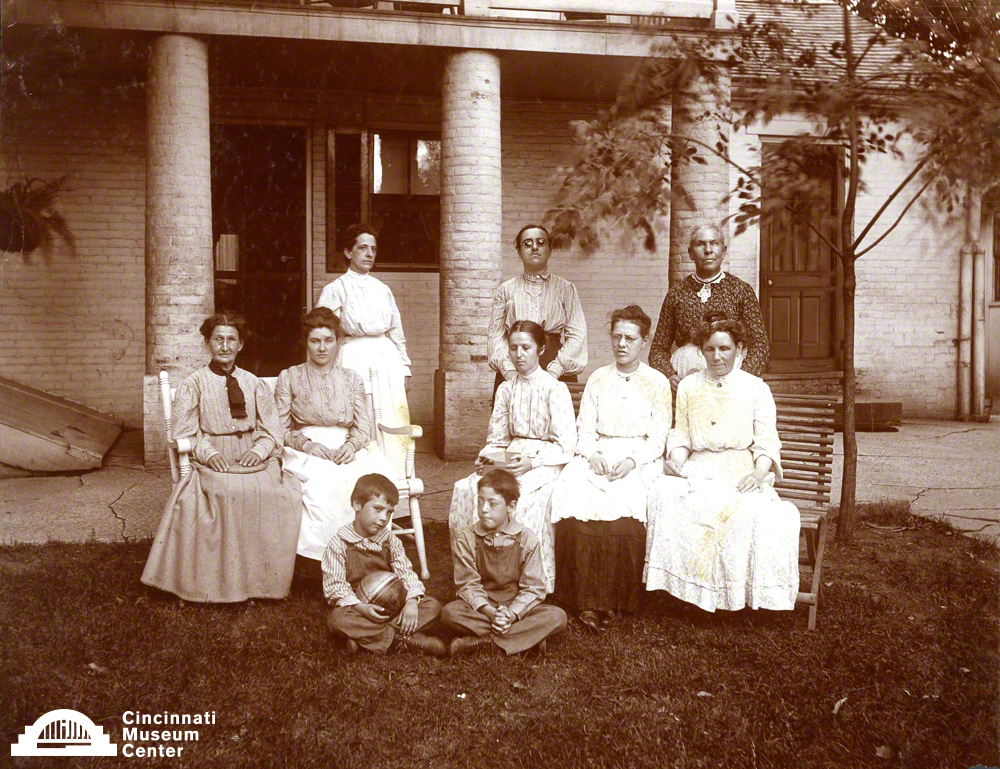
Photo of blind women outside original Clovernook building, n.d. Cincinnati Museum Center. Clovernook Photo Collection (Backlog).
Clovernook originally housed 9 blind women, a matron, and one blind man who made brooms. The weaving and other work was originally done in the barn, but expansion quickly happened. Over the next 40 years, various buildings were erected on Clovernook property to house the expanded weaving department, embossed book printing (which started in 1913), and growing number of women who came to live at the home.
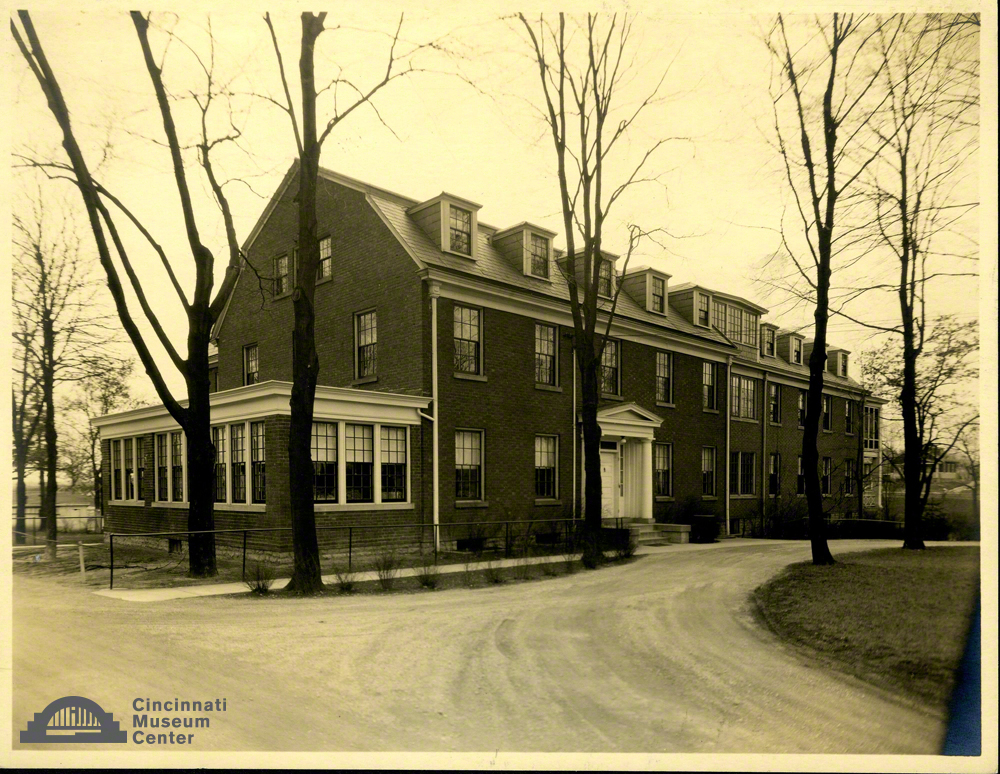
Photo of main Clovernook dormitory built in 1926, n.d. Cincinnati Museum Center. Clovernook Photo Collection (Backlog).
Georgia believed that the work completed at Clovernook was vital to making the blind self-sufficient. “In this way we think they can be made the happiest—by giving them employment and therefore an opportunity of earning their living,” (quote from untitled autobiography written by Georgia in 1908). Clovernook became one of the largest publishers of raised type material.
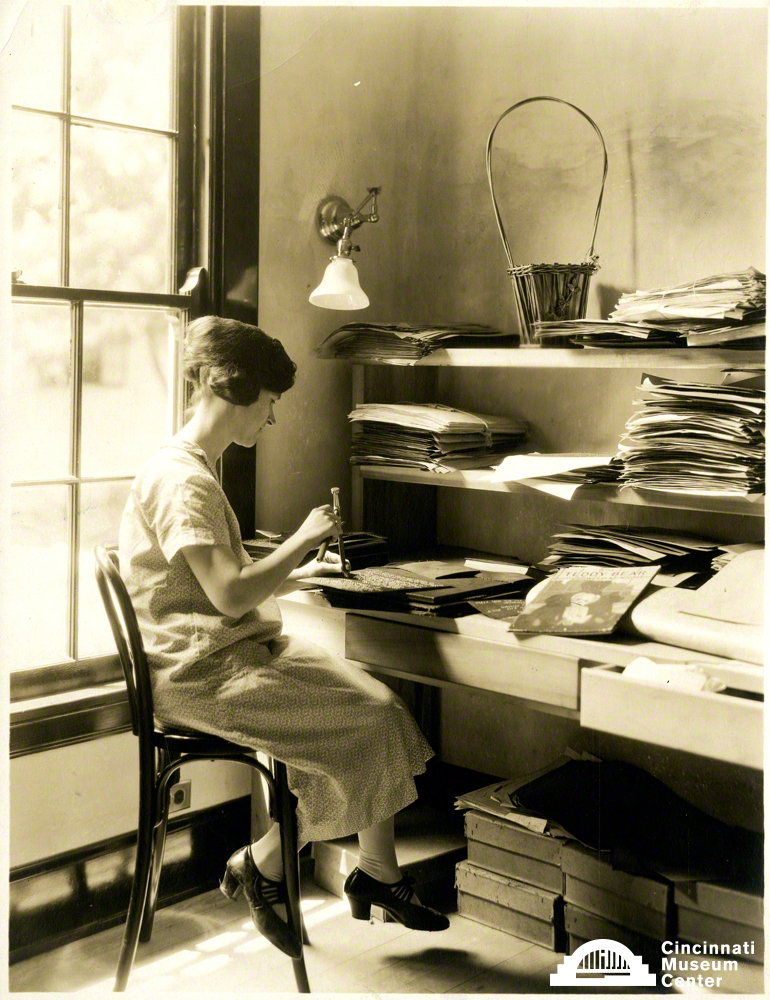
Photo of blind girl proof reading and correcting the brass braille plates, ca. 1925. Cincinnati Museum Center. Mss 1109. Clovernook School for the Blind Records: box 13, folder 18.
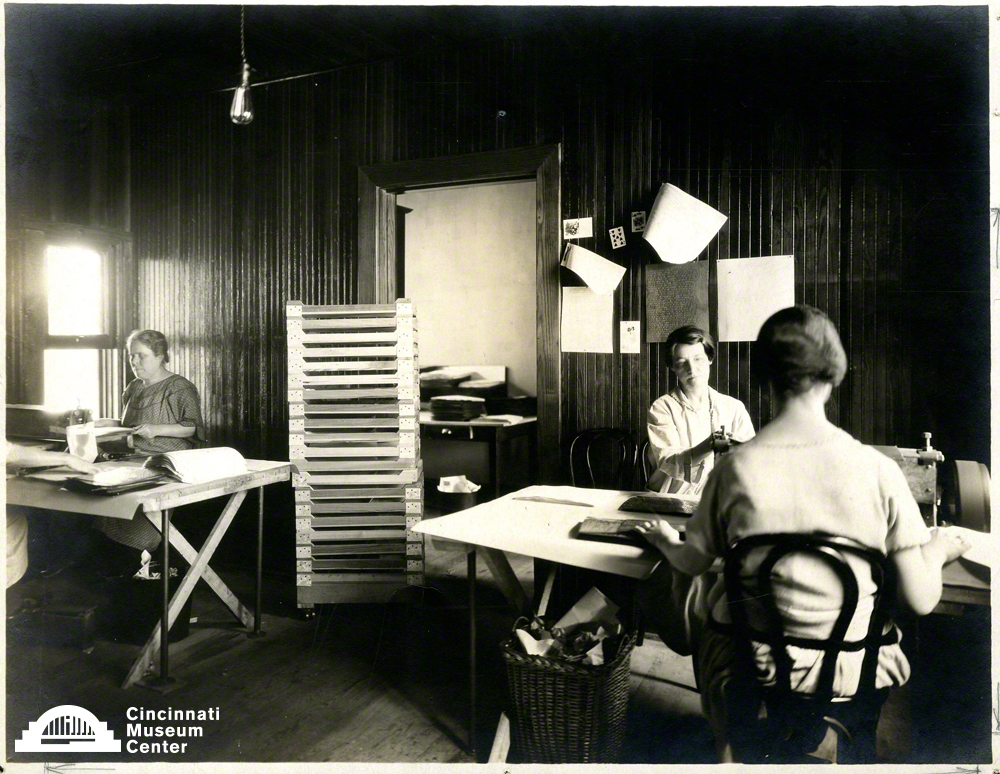
Photo of the Clovernook Press Room, ca. 1925. Cincinnati Museum Center. Mss 1109. Clovernook School for the Blind Records: box 13, folder 17, item 1.
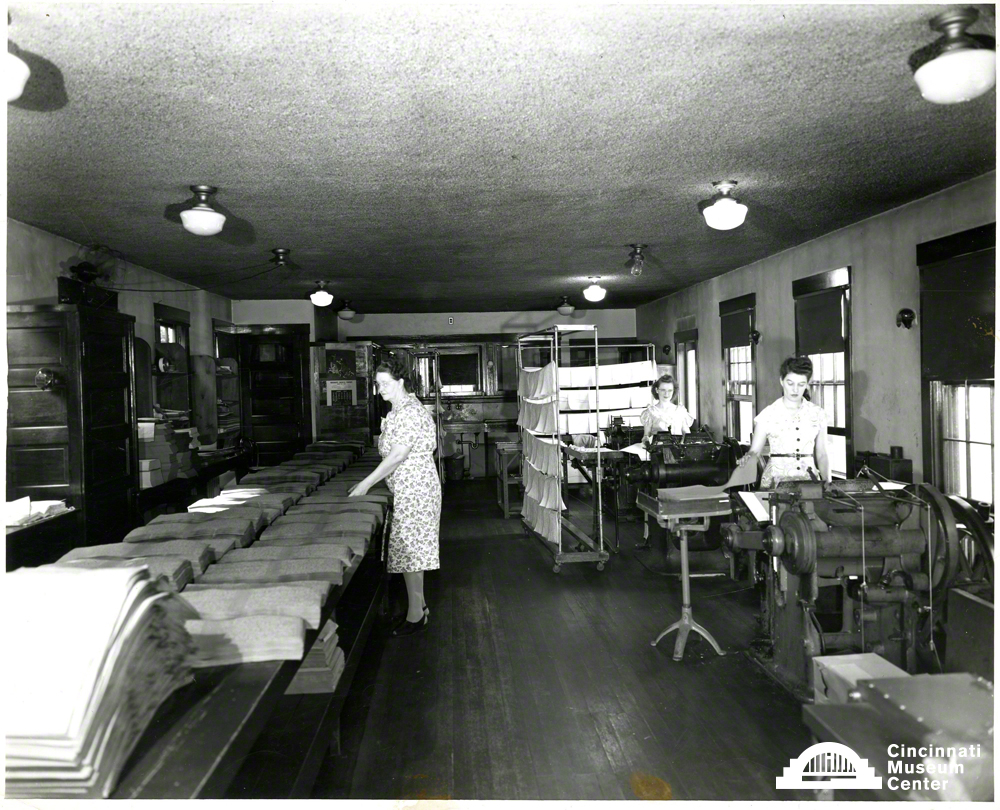
Photo of the Clovernook Press Room, ca. 1940. Cincinnati Museum Center. Mss 1109. Clovernook School for the Blind Records: box 13, folder 16, item 2.
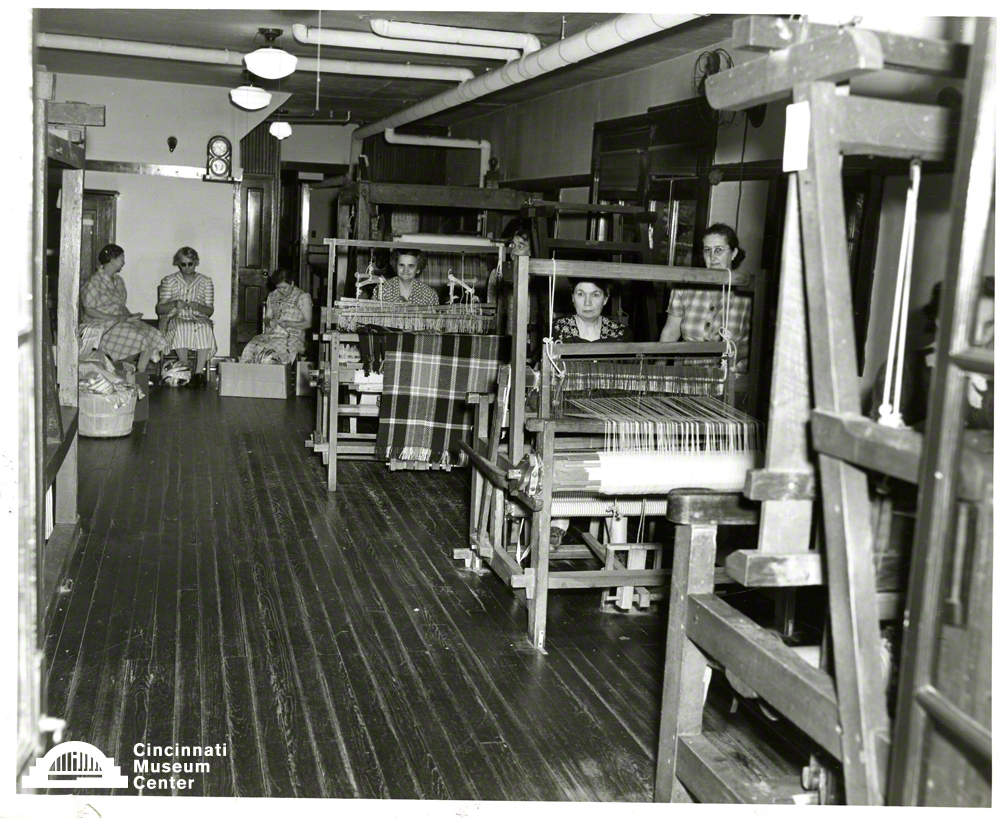
Photo of weaving department, ca. 1940. Cincinnati Museum Center. Mss 1109. Clovernook School for the Blind Records: box 13, folder 17, item 2.
Georgia Duckworth Trader died of a heart attack on March 12, 1944. Three months after her death, she and Florence were awarded the Migel Medal by the American Foundation for the Blind. As her health began to fade, Florence transferred the administration of Clovernook to the Board of Trustees in 1956. Clovernook registered as a not-for-profit corporation in 1958. Florence Bishop Trader died on February 22, 1964. At the time of her death, Clovernook held many government contracts to produce braille books, printed 12 million Braille pages annually, and printed 94,000 Braille serials.
In May 1963, on the 60th anniversary of Clovernook, the original cottage, later called the Cary Cottage, was dedicated as a memorial to the Trader sisters and the Cary sisters. In 1973, Clovernook no longer used Cary Cottage and began a major restoration of the building. The goal was to return the cottage to the state it was in when the Cary family lived there. Also in 1973, Cary Cottage was listed on the National Register of Historic Places. In May 1975, Cary Cottage opened to the public as a Historic House Museum. A reunion of the Cary family was held at Cary Cottage/Clovernook in 1982.
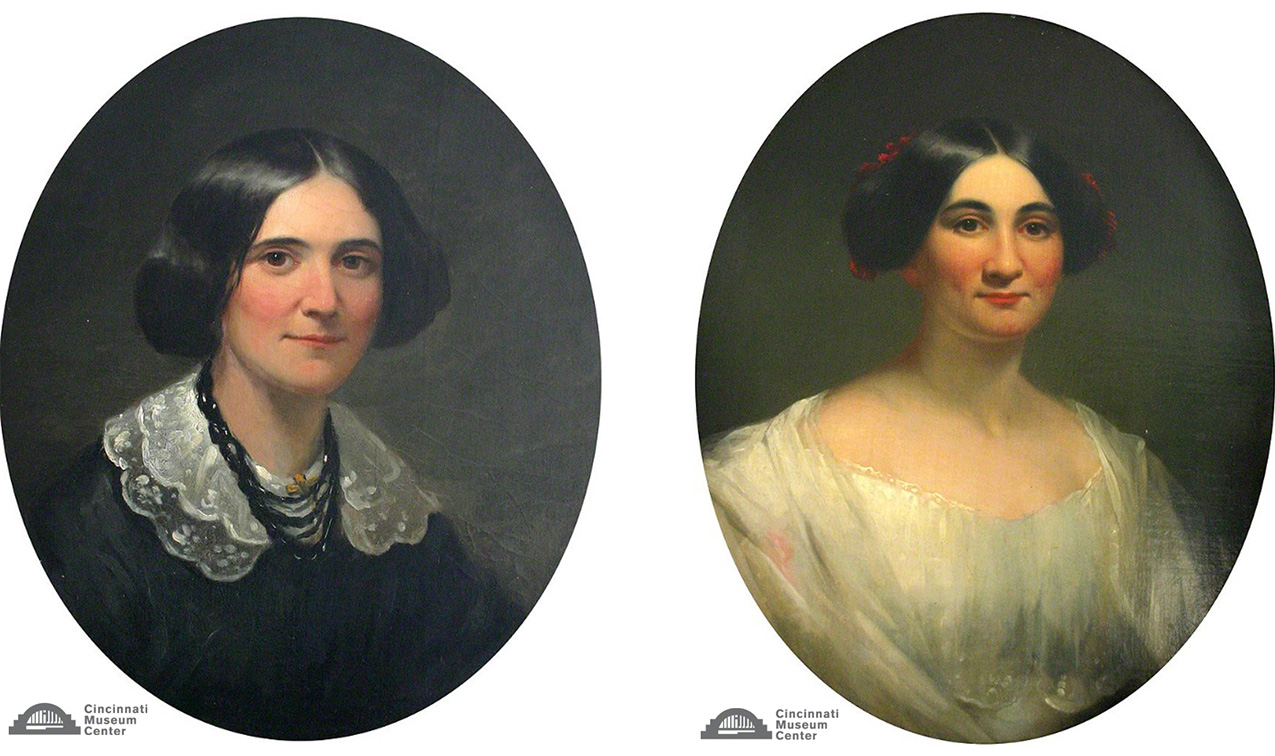
Portraits of Alice Cary, left, and Phoebe Cary, right, 1850. Cincinnati Museum Center. Clovernook Photo Collection (Backlog).
Thanks to the work of the Trader sisters, and people like them, most blind and visually impaired people can now live an independent life in their own homes. While Clovernook no longer serves as a home it still remains a place of education, occupation, and recreation for the blind and visually impaired people in Cincinnati and the surrounding areas. Clovernook remains one of the largest producers of braille in the world.
Museum Admission
Includes Cincinnati History Museum, Museum of Natural History & Science and The Children's Museum
| Adult: | $22.50 |
| Senior: | $15.50 |
| Child: | $15.50 |
| Member Adult: |
FREE |
| Member Child: |
FREE |
Members receive discounts!
Become a Member today to save on programs, exhibits and films throughout CMC.
Museum Hours
Open Thursday – Monday
10 a.m. to 5 p.m.
Closed Tuesday and Wednesday
Closed Thanksgiving Day and Christmas Day
Member’s-only early entry: Saturdays at 9 a.m.
Customer Service Hours:
Monday – Sunday, 9 a.m. to 5 p.m.
